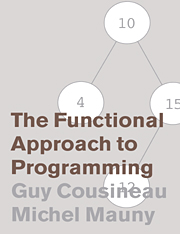Introduction
Published online by Cambridge University Press: 05 June 2012
Summary
Programming
The spectacular development of the computing industry depends largely on progress in two very different areas: hardware and software. Progress in hardware has been fairly quantitative: miniaturized parts, increased performance, cost cutting; whereas the progress in software has been more qualitative: ease of use, friendliness, etc.
In fact, most users see their computer only through interfaces that let them exploit the machine while ignoring practically all its structure and internal details, just as if we drove our cars without ever opening the hood, just like we enjoy the comfort of central heating without necessarily grasping thermodynamics.
This qualitative improvement was brought to us by progress in software as an independent discipline. It is based on a major research effort, in the course of which computer science has been structured little by little around its own concepts and methods. Those concepts and methods, of course, should be the basis for teaching computer science.
The most fundamental concept in computer science is computing, of course. A computation is a set of transformations carried out “mechanically” by means of a finite number of predefined rules. A computation impinges on formalized symbolic data (information) representing, for example, numbers (as in numeric computations) or mathematical expressions (as in formal computation) or data or even knowledge of all kinds. The only characteristics common to all computations is the discreteness of their data (that is, the information is finite) and the mechanical way in which the rules are applied.
- Type
- Chapter
- Information
- The Functional Approach to Programming , pp. 1 - 6Publisher: Cambridge University PressPrint publication year: 1998



